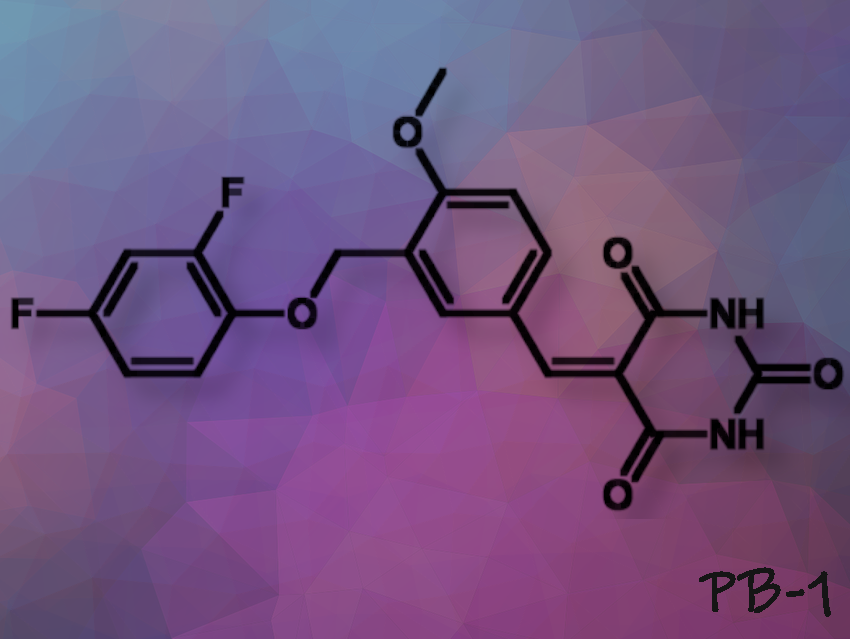Pneumolysin (PLY) is a pore-forming toxin belonging to the family of cholesterol-dependent cytolysins (CDC). It is produced by Streptococcus pneumoniae, a pathogen causing bacterial pneumonia. When released during infection, PLY disrupts the immune response and induces cell death through cytolysis. Despite the medical need, there are currently no clinically approved drugs for the targeted treatment or prevention of PLY-mediated pathogenesis.
Jörg Rademann and colleagues, Freie Universität Berlin, Germany, have discovered, developed, and validated small molecule inhibitors of Pneumolysin (PLY). These inhibitors are referred to as pore-blockers (PB) because they block the pores formed by PLY. The Cys428 residue, located within a specific sequence (UDP) in the cholesterol-binding domain of the toxin PLY, is a critical site where these small molecules can bind and exert their inhibitory effects.
The team found that PB-1 (pictured), identified through virtual screening, inhibits PLY-induced hemolysis. Structural optimization yielded PB-2, which has enhanced efficacy. Scaffold-hopping led to PB-3, which shows superior chemical stability and solubility. Scaffold-hopping is a strategy in medicinal chemistry used to discover new drug candidates by modifying the core structure (scaffold) of an active molecule. Additionally, PB-3 is effective against perfringolysin (PFO), a similar toxin to PLY containing cysteine, produced by Clostridium perfringens.
PB-3 is a promising lead structure for the preclinical development of PLY inhibitors. In the future, advanced CDC inhibitors could complement or even replace antibiotics for preventing invasive CDC-related infections, offering new therapeutic opportunities.
- Umer Bin Abdul Aziz, Ali Saoud, Marcel Bermudez, Maren Mieth, Amira Atef, Thomas Rudolf, Christoph Arkona, Timo Trenkner, Christoph Böttcher, Kai Ludwig, Angelique Hoelzemer, Andreas C. Hocke, Gerhard Wolber, Jörg Rademann, Targeted small molecule inhibitors blocking the cytolytic effects of pneumolysin and homologous toxins, Nature Communications 2024, 15, 4-26. https://doi.org/10.1038/s41467-024-47741-3




